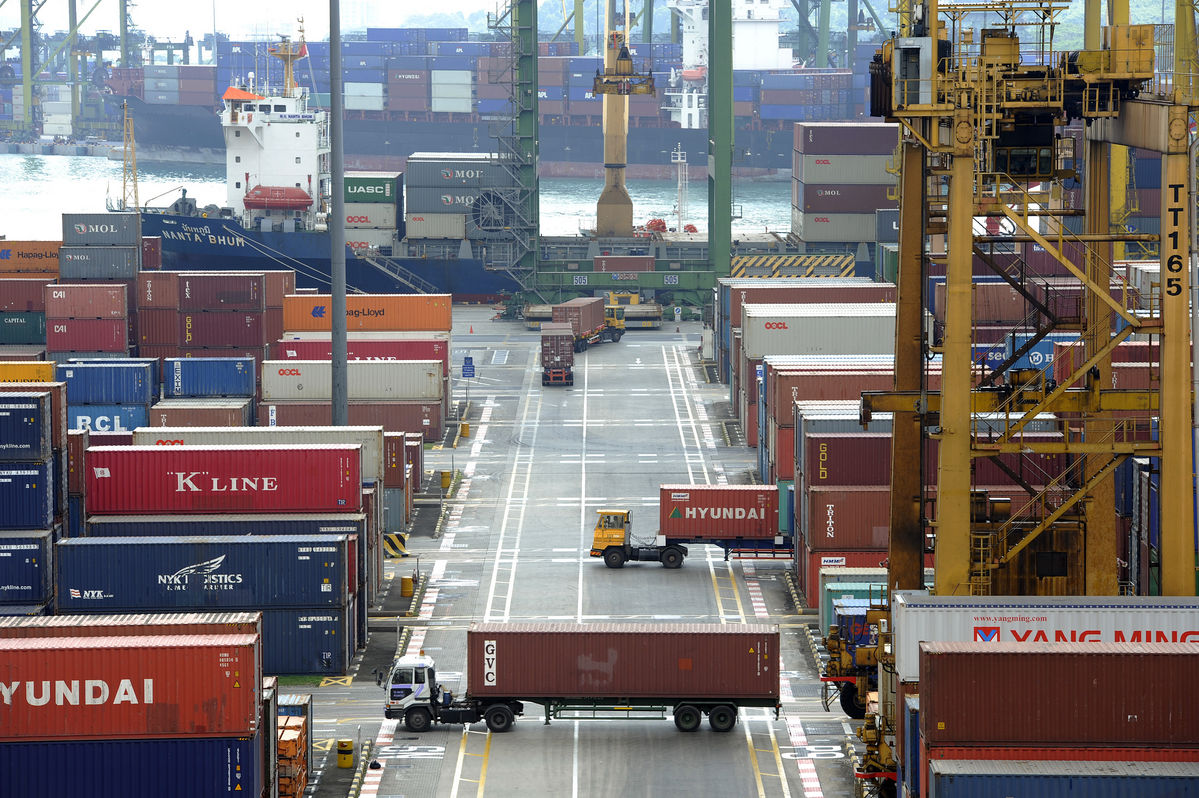Singapore provided a report card on its economy that beat analyst forecasts in one of Asia’s earliest growth estimates, as improving services and construction countered faltering exports. It may be too early to celebrate.
Gross domestic product rose an annualized 5.7% in the three months to Dec. 31 from the previous quarter, when it expanded a revised 1.7%, the trade ministry said in an advance estimate on Monday. The median of nine estimates in a Bloomberg News survey was for a 1% expansion. The economy grew 2.1% last year, the slowest pace in six years.
Singapore’s export-oriented economy, always vulnerable to global swings in demand, reflects the threat China’s slowdown poses for the region. The island’s largest export destination is tipped to expand at the slowest pace in 25 years, and the first Chinese economic reports of 2016 signaled manufacturing weakened for a fifth straight month. Domestically, home prices posted their longest losing streak in 17 years last quarter and a labor crunch could cap further gains in services.
“There could be high odds of a downward revision come February,” said Weiwen Ng, a Singapore-based economist at Australia & New Zealand Banking Group Ltd., referring to final GDP figures due next month. “Given that the outperformance for this quarter happens to be in the services sector, it could be rather transient. Singapore remains confronted with twin headwinds externally and domestically.”
The Singapore dollar traded at 1.42 against the US currency on Monday, compared with 1.42 on Dec. 31. Singapore markets were closed for New Year’s Day on Jan. 1. The Straits Times Index fell 1.5%.
Advance Figures
Monday’s data are advance estimates computed largely from figures in the first two months of the quarter, according to the trade ministry. It’s “intended as an early indication of the GDP growth in the quarter, and are subject to revision when more comprehensive data becomes available,” a trade ministry spokesperson said Monday in response to e-mailed questions.
This is standard practice among statistics agencies worldwide, the spokesperson said.
There has been a difference of 4.3 percentage points on average between the advance and final readings of Singapore’s GDP growth since the start of 2010, based on annualized quarter-on-quarter data compiled by Bloomberg. The difference is a narrower 1 percentage point for US GDP and 1.6 percentage points for Japan’s.
Singapore faces challenges including fiercer competition in a globalized world, Prime Minister Lee Hsien Loong said in his New Year message on Dec. 31. The economy is “slowing down and undergoing transition,” he said.
GDP grew 2% in the fourth quarter from a year earlier, compared with a median survey estimate for 1.2%.


